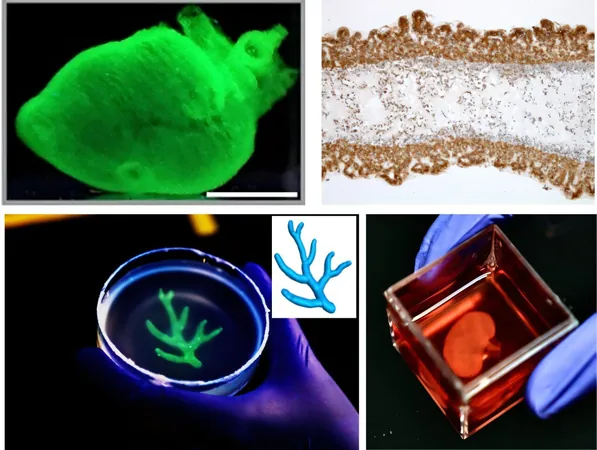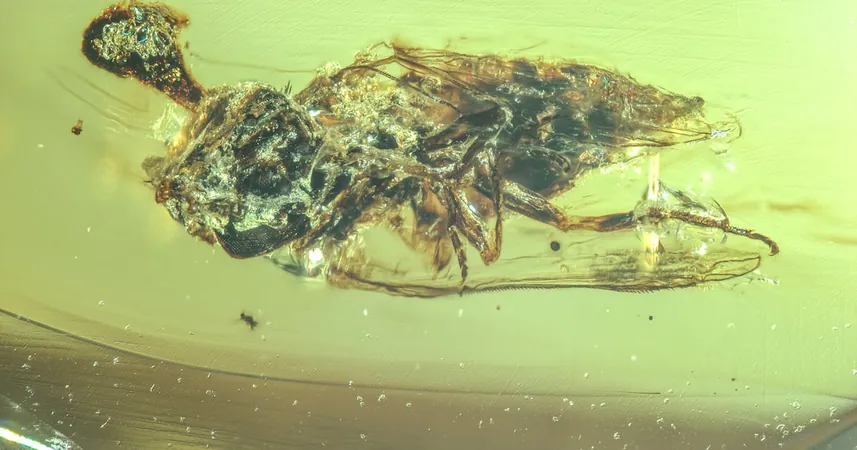
Revolutionary Collagen-Based Bioprinting Method Set to Transform Tissue Engineering
2025-06-09
Author: Jacob
Breakthrough in Bioprinting Technology
A groundbreaking new method of bioprinting has emerged from a team of researchers led by Dr. Michael Mak at Stony Brook University's Renaissance School of Medicine. This innovative technique, known as TRACE (Tunable Rapid Assembly of Collagenous Elements), tackles the longstanding challenges in creating functional biological structures for medical applications.
Elevating Drug Development and Regenerative Medicine
TRACE isn't just another bioprinting method; it is a highly adaptable biofabrication technique poised to expedite drug development and enhance disease modeling, making significant waves in regenerative medicine. The research, detailed in the prestigious journal Nature Materials, opens new doors for innovation in medical science.
The Challenge of Functional Bioprinted Tissues
Despite the promise of bioprinting technologies, creating tissues and organs that truly mimic their natural counterparts has been a formidable challenge. Traditional bioprinted tissues often fall short, failing to activate biological cells in ways that allow them to function properly within the body. This limitation has kept many bioprinted tissues out of clinical use.
Revolutionary Capabilities of TRACE
Dr. Mak describes TRACE as a novel platform that enables the fabrication of a wide variety of tissue and organ types. "With TRACE, we've developed a method to print intricately designed tissue structures using collagen—our body’s natural building block—while ensuring compatibility with living cells," he explains.
Collagen: The Backbone of Human Tissue
Collagen, particularly its Type I variant, is the most abundant protein in our bodies, forming crucial components of skin, muscle, bone, and vital organs. It serves as the essential 'glue' that binds tissues and cells, guiding them in performing their respective functions—making it the ideal candidate for use as a bioink material.
Instant Assembly for Realistic Tissue Creation
In their paper, titled "Instant Assembly of Collagen for Tissue Engineering and Bioprinting," the researchers outline how TRACE facilitates rapid bioprinting of physiological materials by accelerating the gelation process of collagen. This is achieved through a technique known as macromolecular crowding, which speeds up collagen assembly through the addition of inert crowding materials.
The Future of Biofabrication
With TRACE, the team can craft tissues that closely resemble those found within the human body. This method has the potential to produce functional tissues and 'mini organs,' such as heart chambers, heralding a new era for bioengineering. The authors conclude that TRACE not only achieves structural complexity and functionality but also expands the range of controllable biofabrication across various organ systems, solidifying collagen’s role as a pivotal component.









 Brasil (PT)
Brasil (PT)
 Canada (EN)
Canada (EN)
 Chile (ES)
Chile (ES)
 Česko (CS)
Česko (CS)
 대한민국 (KO)
대한민국 (KO)
 España (ES)
España (ES)
 France (FR)
France (FR)
 Hong Kong (EN)
Hong Kong (EN)
 Italia (IT)
Italia (IT)
 日本 (JA)
日本 (JA)
 Magyarország (HU)
Magyarország (HU)
 Norge (NO)
Norge (NO)
 Polska (PL)
Polska (PL)
 Schweiz (DE)
Schweiz (DE)
 Singapore (EN)
Singapore (EN)
 Sverige (SV)
Sverige (SV)
 Suomi (FI)
Suomi (FI)
 Türkiye (TR)
Türkiye (TR)
 الإمارات العربية المتحدة (AR)
الإمارات العربية المتحدة (AR)